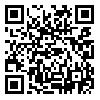Volume 20, Issue 1 (2018)
JAST 2018, 20(1): 141-152 |
Back to browse issues page
Phytochemical Variations in Different Tomato Genotypes Grown in Eastern Indian Indo-Gangetic Regions
1- Department of Horticulture (Vegetable & Floriculture), Bihar Agricultural University, Sabour, Bhagalpur, Bihar, India.
2- Department of Horticulture, Banaras Hindu University (U.P.), India.
2- Department of Horticulture, Banaras Hindu University (U.P.), India.
Abstract: (2829 Views)
In this study, fifteen commercial varieties, nine exotic genotypes, and three wild species of tomato grown in Eastern India were analyzed for variations in different phytochemicals viz. ascorbic acid, lycopene, total carotenoids, total phenolics content and total antioxidant capacity. Selected genotypes showed significant differences with respect to phytochemical composition. Among antioxidant property parameter, ascorbic acid content ranged between 12.62 to 76.15 mg 100 g-1 of Fresh Weight (FW), whereas, the total phenolic content and total antioxidant capacity varied from 41.10 to 139.59 mg GAE 100 g-1 of FW and 1.16 to 4.52 µmol Trolex Equivalent (TE) g-1 of FW, respectively. Among carotenoid parameters, lycopene and total carotenoids content in whole tomato fruit ranged between 0.47 to 5.48 and 1.14 to 5.79 mg 100 g-1 of FW, respectively. Interestingly, it was found that, among the evaluated genotypes, Exotic Collection (EC lines) showed significant enriched amount of these phytochemicals. Results indicated that the maximum ascorbic acid (76.15 mg 100 g-1 FW), total phenolics content (139.59 mg GAE 100 g-1 of FW), and total antioxidant capacity (4.52 µmol TE g-1 of FW) was highest in exotic collection EC 528372, while, lycopene (5.48 mg 100 g-1 of FW) and total carotenoids content (5.79 mg 100 g-1 of FW) were recorded highest in cultivar Rio Grande. Thus, this group of screened genotypes consisting of phytochemical rich wild species and exotic collection can be further used for improvement of functional quality of tomato in future breeding programs of India and the Indo Gangetic region.
Article Type: Research Paper |
Subject:
Horticultural Science
Received: 2016/07/9 | Accepted: 2017/04/26 | Published: 2018/01/1
Received: 2016/07/9 | Accepted: 2017/04/26 | Published: 2018/01/1
| Rights and permissions | |
 |
This work is licensed under a Creative Commons Attribution-NonCommercial 4.0 International License. |


